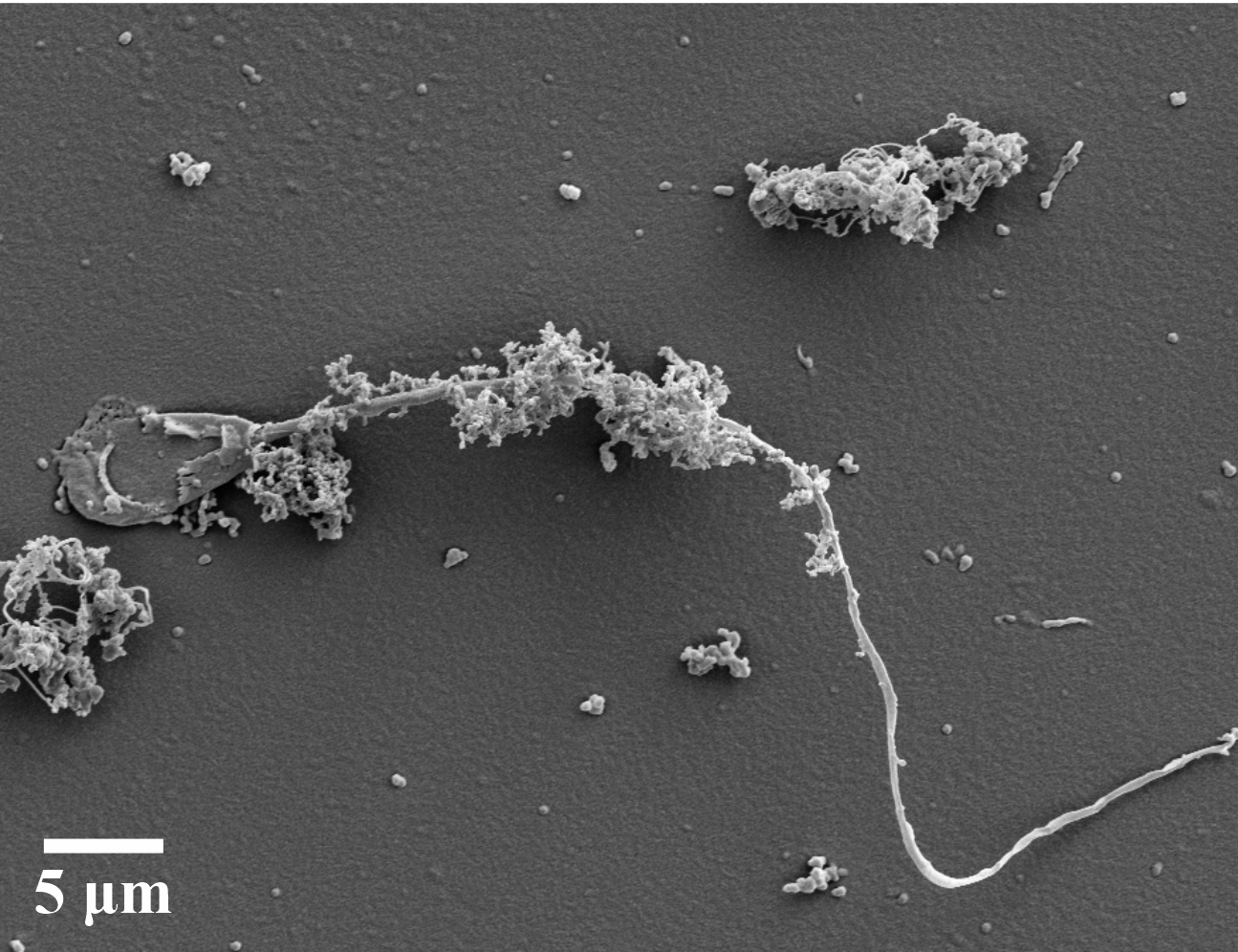
Engineering mini robots to treat diseases may seem like an element of a distant future in sci-fi novels where humans are augmented with machines, but early research to do just that is well underway.
Micro and nanorobots for targeted drug delivery are meant to reach hard-to-access parts of the body. For example, designing drugs that cross the blood-brain barrier continues to be a challenge. But startups such as Bionaut Labs have made headlines with their remote-controlled microrobots to treat neurological diseases.
True to their name, microrobots are larger than nanorobots and are measured on the micrometre scale, compared to nanorobots on the nanometre scale. One micrometre is the size of one-millionth of a metre.
Outside of scale, definitions for these robots remain broad. Autonomous sensory behaviour is built into the designs for macroscopic robots, explains Yuebing Zheng, PhD, associate professor at the University of Texas at Austin. But in micro and nanorobots, sensory abilities or control systems are often located outside of these devices, as they are too small to hold inside, he adds. This means these machines are often controlled from the outside, which makes research challenging, Zheng says. As a result, scaling up for clinical studies is difficult, says director of the nanorobotics laboratory at Polytechnique Montréal, Sylvain Martel, PhD.
Still, company definitions of micro or nanorobots can be quite loose, says Edward Steager, PhD, senior research investigator at the University of Pennsylvania. “Sometimes they are just injecting something [into the organism]. There is no guide, no control, no robotics, and they call it a nanorobot. People use those terms freely,” says Martel.
A multitude of approaches
Micro and nanorobotic research is a rapidly growing field where insights into the essentials of the technology are coupled with the discovery of new applications, says Steager.

US Tariffs are shifting - will you react or anticipate?
Don’t let policy changes catch you off guard. Stay proactive with real-time data and expert analysis.
By GlobalDataPreviously, researchers focused on fundamental research as is the case with any new area, says Mariana Medina-Sánchez, PhD, group leader, Institute for Integrative Nanosciences-IFW Dresden, Germany.
But now, scientists focus on the translation of these concepts into preclinical animal models and medical applications, she says. This means that the community now studies the most optimal designs and materials for devices, together with a focus on their improved control, Medina-Sánchez explains.
The field now includes a multitude of approaches ranging from synthetic machines to biohybrids. Biohybrids fuse microscopic organisms and cells like bacteria or sperm with robotic parts. Robots can then take the form of nanoparticle swarms, soft microrobots, or sperm coated with magnetic material.
In 2016, Martel and his colleagues developed magneto-aerotactic bacteria that carried nanoliposomes filled with anticancer drugs. Swarms of some 100 million bacteria were then injected into mice with colorectal tumors. The idea here was that the bacteria would be a transport system, which would be able to move to the tumor and deliver the drug locally, thereby reducing side effects, explains Martel.
In May 2018, the Canadian company Starpax Medical, now known as Starpax Biopharma, announced that it acquired a license for the technology. The firm wants to get its brand of bacterial robots called Magnetodrones to the clinic by the end of 2022 or early 2023 for six cancer types. Martel serves as the Chief Technology Officer at Starpax.
Other researchers like Steager use microrobots made of nanoparticle swarms to remove biofilm. Here, a swarm of iron oxide nanoparticles are fit into the surface topography-adaptive robotic superstructures (STARS) that can then change shape and remove biofilm from teeth. The team previously used these particles in catalytic antimicrobial robots (CARs) for dental biofilm removal and is now redesigning the particles to refine the technology, Steager says.
Small successes could lead to meaningful treatments
Theoretically, this technology could be used to remove bacterial biofilms elsewhere. Having previously used CARs to remove biofilms inside cylindrical tubes, Steager says they could be used to clear biofilms in implanted medical devices like catheters or stents where that is a common problem.
One of the attractive features of these micro or nanorobots is the potential for them to target remote areas in the human body. Hongsoo Choi, PhD, chair of the Department of Robotics and Mechatronics Engineering in South Korea’s Daegu Gyeongbuk Institute, works on research into crossing the blood brain-barrier. One of the projects involves a magnetically powered microrobot that is applied intranasally to deliver stem cells to the brain. Choi and others are now developing a next version of Cellbot, which will be part of a pre-clinical study.
Even earlier in conceptual development are synthetic soft microrobots that can mimic white blood cells. The microrobots, unlike the drug itself, could push through the blood-brain barrier, says Stefano Palagi, PhD, assistant professor at the BioRobotics Institute of Scuola Superiore Sant’Anna in Pisa. This could not only allow targeted neurological treatments but also help avoid invasive surgeries, he says.
While some of these approaches may not result in success, Choi views this as a learning step for other uses. Steager echoes a similar sentiment in his work.
“We’re trying to take that incremental approach, and that’s what you are going to see [in] the field. [We will have] very small successes that eventually lead to meaningful treatments.”
Preclinical challenges in control and imaging
Nonetheless, several challenges remain. The devices’ biocompatibility and degradability in the body need to be considered, Medina-Sánchez says. Once the robot delivers drugs to the targeted area, it needs to either be retrieved or dissolved, says Choi. Preclinical research has been done in controlled environments, but animal systems are more complex, says Medina-Sánchez.
Moreover, it is not possible to have high enough image resolution to view all the details needed for the control of miniature devices, explains Martel.
Martel says fusing microorganisms with robotic parts gives greater autonomy to the devices without a need for high-resolution imaging. Dual ultrasound and photo acoustics could be used to monitor these devices, but they do not have a high penetration depth, which means that this imaging would not work well in larger animals or humans, says Medina-Sánchez.
To others, using the right imaging with biohybrids is even more difficult than with other robots. Mapping the movement of biohybrids is difficult due to their natural structure, says Islam Khalil, assistant professor at University of Twente. He had created biohybrid magnetic microrobots called IRONSperm, which featured sperm cells wrapped with magnetic nanoparticles and loaded with the anticancer drug doxorubicin. Detecting a sperm cell on its own through ultrasound imaging would be very difficult, Khalil states. But by coating them with magnetic particles, the augmented cells now became easier to monitor, he explains. The size of the machines is also a challenge. Given that these are small machines, force continues to be a barrier in microrobotics, says Steager. In his approach, a single iron oxide nanoparticle would not do much, but a swarm can, he explains.
Business interests on the rise, but understanding “loose”
On the product development side, some areas are attracting more interest than others. Microbot Medical is bringing its disposable catheter robot into the clinic in neurovascular indications.
But independent untethered robots are further from human use and translation, Choi explains.
“When you look at the state of the art and the different research groups, you have too many ideas, too many methods. Emotions are high. We need more time for research groups to repeat the results for the methods to materialise,” says Khalil.




